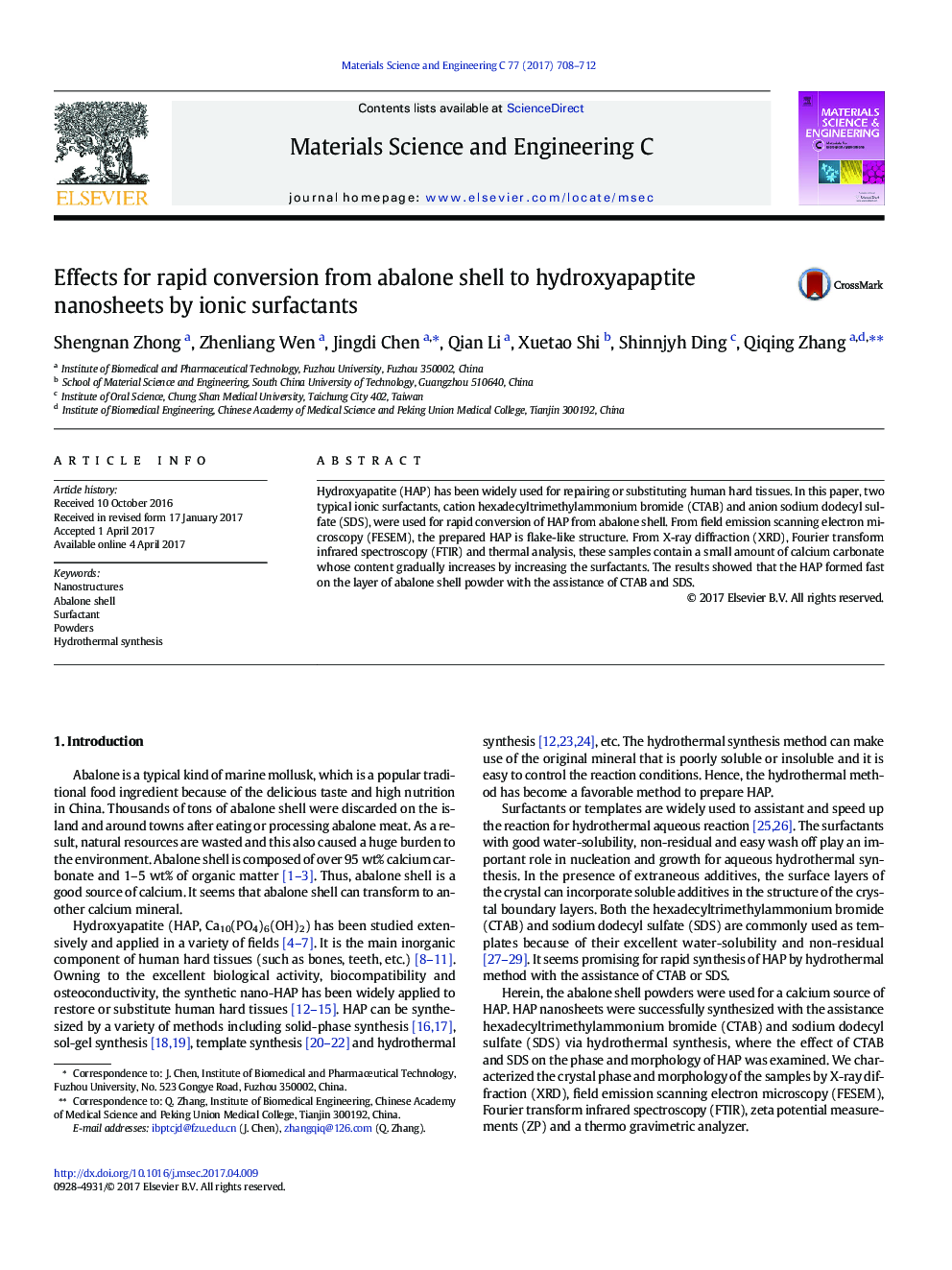| کد مقاله | کد نشریه | سال انتشار | مقاله انگلیسی | نسخه تمام متن |
|---|---|---|---|---|
| 5434571 | 1509144 | 2017 | 5 صفحه PDF | دانلود رایگان |
- Hydroxyapatite nanosheets formed quickly with assistance of ionic surfactants.
- Both ionic surfactants had little effect on the morphology of hydroxyapatite.
- Hydroxyapatite crystals preferred to crystalize on abalone shell powder rather than on ionic surfactants.
Hydroxyapatite (HAP) has been widely used for repairing or substituting human hard tissues. In this paper, two typical ionic surfactants, cation hexadecyltrimethylammonium bromide (CTAB) and anion sodium dodecyl sulfate (SDS), were used for rapid conversion of HAP from abalone shell. From field emission scanning electron microscopy (FESEM), the prepared HAP is flake-like structure. From X-ray diffraction (XRD), Fourier transform infrared spectroscopy (FTIR) and thermal analysis, these samples contain a small amount of calcium carbonate whose content gradually increases by increasing the surfactants. The results showed that the HAP formed fast on the layer of abalone shell powder with the assistance of CTAB and SDS.
Journal: Materials Science and Engineering: C - Volume 77, 1 August 2017, Pages 708-712
